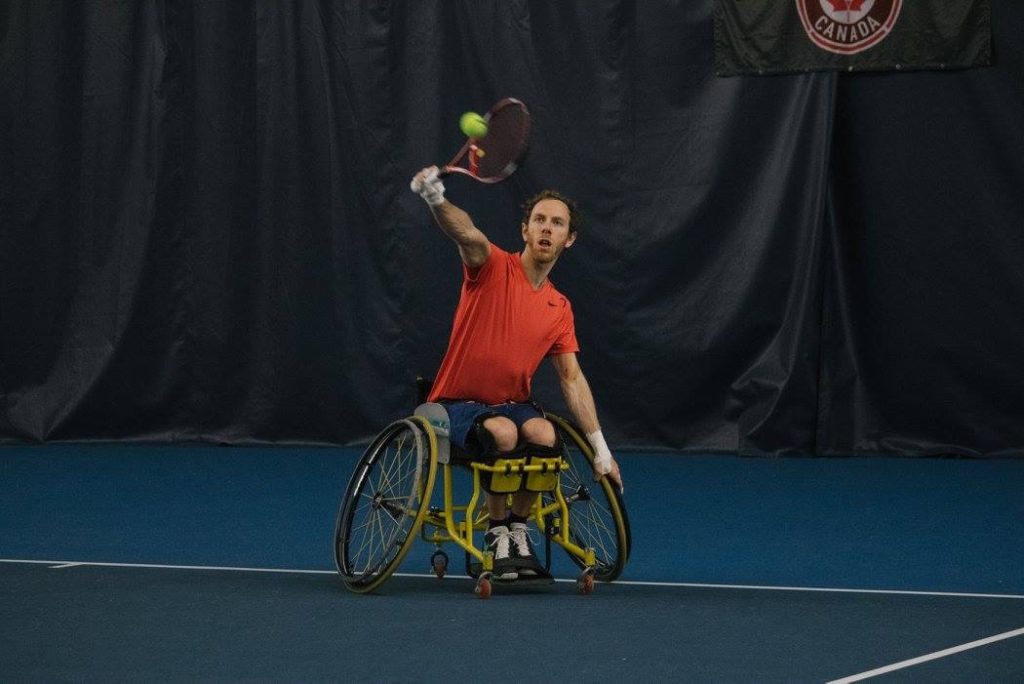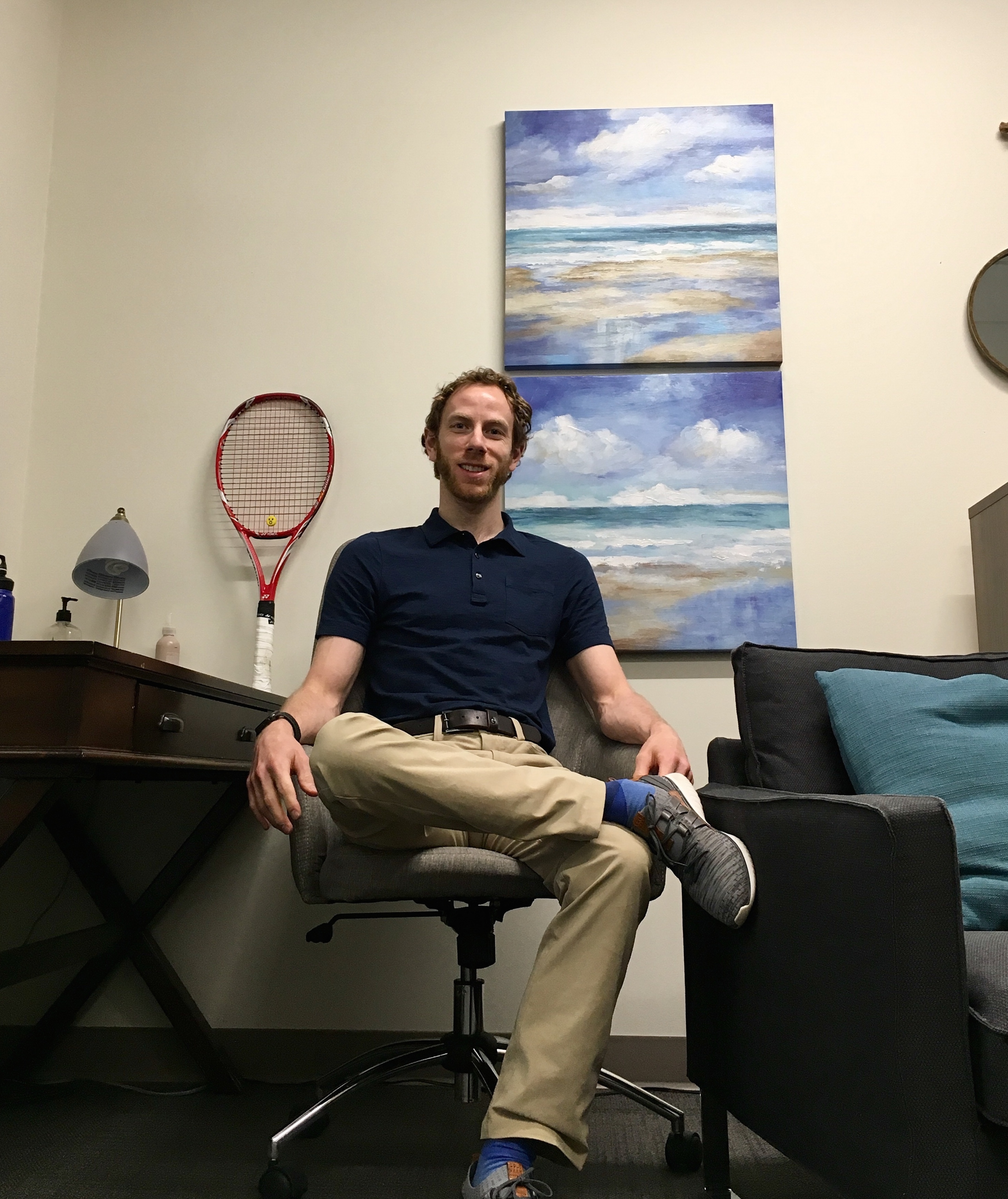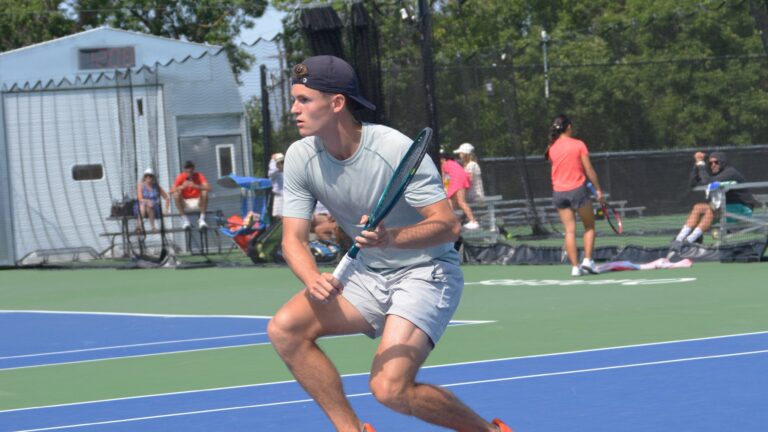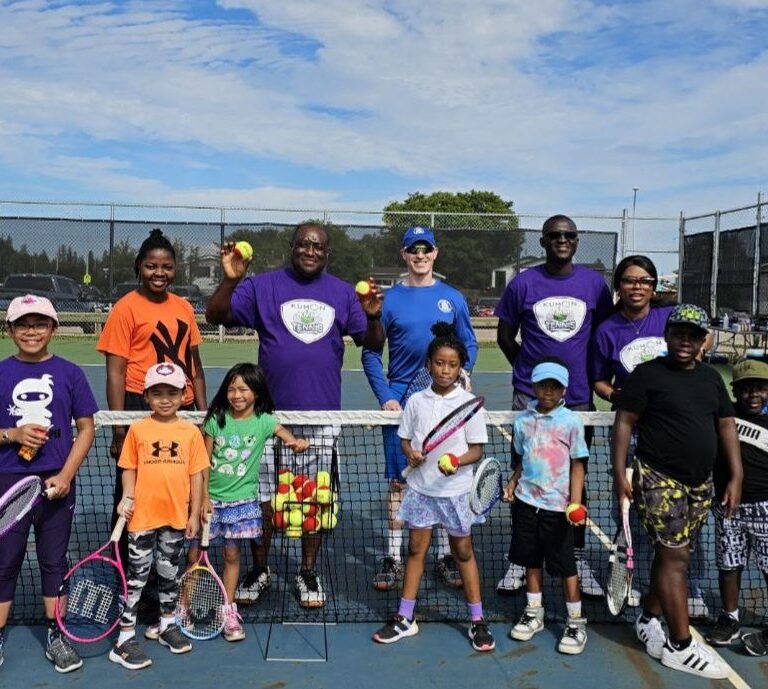
Laurie Zalmanowitz is a pacticing sport psychologist and wheelchair athlete who lives in Edmonton, Alberta, and plays out of the Saville Community Tennis Centre. Laurie has an interesting story of how tennis and sport psychology came together in his life, beginning at the age of 3, with a tennis racket, and a grandfather who loved the game.
Q: How long have you been practicing as a psychologist? What are your qualifications and areas of focus?
A: I have been practicing as a psychologist for 6 years. I have an MEd in Counselling Psychology from the University of Western Ontario, with a thesis and focus on sport psychology. And I also have an BA in Psychology from the University of Arizona. Areas of focus include performance enhancement, anxiety, depression, trauma, stress management and transitions.
Q2: What types of client situations do you address? What is a common sport psychology question or issue?
A: I address a variety of client issues including anxiety, depression, trauma, stress, life and sport transitions. With athletes I typically address issues related to anxiety, focus and concentration, burnout/overtraining, injury rehabilitation, sport transitions, and retirement (to name a few). There is a misconception that you have to have something wrong with you if you are seeing a psychologist. However many athletes are looking for that extra edge by working on the mental aspect of sport to compliment their other training.
A common issue that comes up in sport psychology, especially in developing athletes, is performance anxiety and pressure. When it gets to be too much a player may start to overthink things, second guess themselves and lose focus. It can be difficult to manage expectations as the athlete isn’t just managing their own expectations but also the expectations of their coaches, teammates and families. In working with the athlete I try to provide them with a toolbox that they can use to better understand what is going on and help manage these concerns.
In my practice I work with the general population as well as with individual athletes and teams from recreational to professional/elite levels (generally ages 12 and up).
 Q3: How and when did you learn to play tennis in a chair?
Q3: How and when did you learn to play tennis in a chair?
A: I had played recreational able-bodied tennis and have always been athletic. My grandfather was really into tennis and I had a racquet in my hand when I was 3. When I had to start using a wheelchair at age 11 due to a neuromuscular disorder I sought out adaptive athletics and gave a bunch a try. Tennis was one that I really fell in love with and saw potential for advancement.
I got to learn from some experienced national team members when I started out and then coaches at the Saville along with national team coaches across the country. It’s a tight knit community so I also learned from watching other players as well as feedback from other players watching and/or playing against me. Learning the game and developing required a very open mind. I was playing people more than twice my age and I’d often train with able-bodied players, forcing me to be that much quicker.
Q4: What was your experience on Canada’s national team?
A: I was on the national team as a junior and really looked up to he senior members. It was a great experience for me to learn more about the game and evolve my style of play. It also allowed me to travel, get input from several great coaches, meet other players. I played in some high level events like World Team Cup and ITF Jr. Championships and other events on the Men’s ITF circuit.
Playing at that higher level also showed me how important the mental side of tennis is, since you’re often alone with your thoughts when you’re on the court. It was part of the reason why I wanted to learn more about sport psychology.
Tennis also opened up opportunities for education. While on the wheelchair tennis team at the University of Arizona I took on more of a leadership role and had more court time and played more tournaments, helping me to move up the rankings. I also captured three Collegiate Championships while there.
Q5: What a common psychological challenge that wheelchair athletes face?
A: A wheelchair athlete faces many of the same psychological challenges that able-bodied athletes do (we are more similar than different). However I do feel that wheelchair athletes have to work harder to get funding and exposure. It’s getting better but there’s still a long way to go.
Q6: Who is a wheelchair athlete who you admire?
A: That’s a tough one. Pat Anderson is a spectacular talent, probably the best wheelchair basketball player in the world (and he’s Canadian). He tried tennis and was scary good at that too. Wheelchair tennis wise, Shingo Kunieda. His work ethic is amazing. He is very mentally strong and is great at taking time away from his opponents. I also have to admire the sheer dominance of Esther Vergeer over the span of her career, holding the #1 ranking for 14 years! Holding that top spot for so many years and converting the key points in championship matches is something that set her apart from other players. She demonstrated the importance of being physically, technically and mentally strong.
For more on wheelchair tennis in Canada, go to Tennis Canada’s site.
Thanks Laurie! See you on the courts or in your office!






